In recent years, we’ve been exposed to the organic health trend, meaning purchasing fruits free of chemicals, just as nature intended. Unfortunately, the prices of these fruits are almost two times more expensive than those produced by other, less healthy, methods. The solution to this problem can be seen as challenging, but the truth is that it is simple and at the same time fun and enriching - growing fruit trees in your yard or on a balcony if you live in an apartment.
Aside from giving you something to do and the blooming green color that will bring light into your life, this new hobby will provide both natural and fresh fruits at your fingertips, as well as a sense of satisfaction and therapy for the soul. This guide will teach you what you need to do to make your balcony or garden a flowering and lively orchard with 8 types of fruit trees you can grow on your own.

Before starting, you should know:
1. It’s recommended to water trees and plants late in the evening or at night - not during the day especially when it’s hot (unless otherwise stated on the seed pack).
2. If you decide to grow a tree in a pot, you have to make sure it is made of plastic, with a double wall and holes at the bottom. Although concrete or clay pots are more beautiful, they absorb and retain heat for a long time, causing damage to the roots of the tree. As for the holes in the bottom, these are meant to drain the soil from the tree so that excess water doesn’t cause the formation of fungi or decay in the roots.
3. You can keep all the trees in the article below small, and you can learn how to do this with the help of this guide since the trees can reach a great height and are usually not suitable for sun terraces or small gardens.
1. Lemon tree
If you’ve ever wanted to grow a lemon tree on your balcony and thought it was impossible, let us tell you that it actually is possible and even easy. The lemon tree is considered to be one of the most resilient fruit trees, and in order to grow it needs to be placed in an area with sun exposure for most of the day and protected from strong winds. If you live on a very high floor and strong winds are normal on your balcony, you may want to choose another tree from the list.
- The recommended varieties of lemon tree are Lisbon or Eureka.
- It is best to buy the lemon tree as a small tree rather than trying to grow one from seeds.
- The growth rate of the lemon tree is fast and it can reach a height of between 3-6 meters.
- The best time to plant the tree is during the spring months, although it is possible to do so throughout the year.
- The irrigation conditions for growing lemon in the early years are at a reasonable level - do not flood the flowerpot, and when the tree yields fruit you can reduce to the point of not watering it at all, except on very hot days, when it is advisable to give it just a little water.
- As mentioned, the lemon needs a lot of sun, between 10-14 hours a day.
- The tree will begin to yield fruit after 3 years, and during this time and after it, you must treat it and prune dry or diseased leaves and branches.
2. Strawberry bush
Strawberry is a favorite fruit that’s not so easy to grow, but it is possible if you’re up for the challenge. The saplings should be planted in a planter in your garden or on the balcony and placed in an area with lots of light and air. The bush needs treatment only when it yields fruit which should be kept far from the soil. In addition, it is recommended to protect the bush from birds.
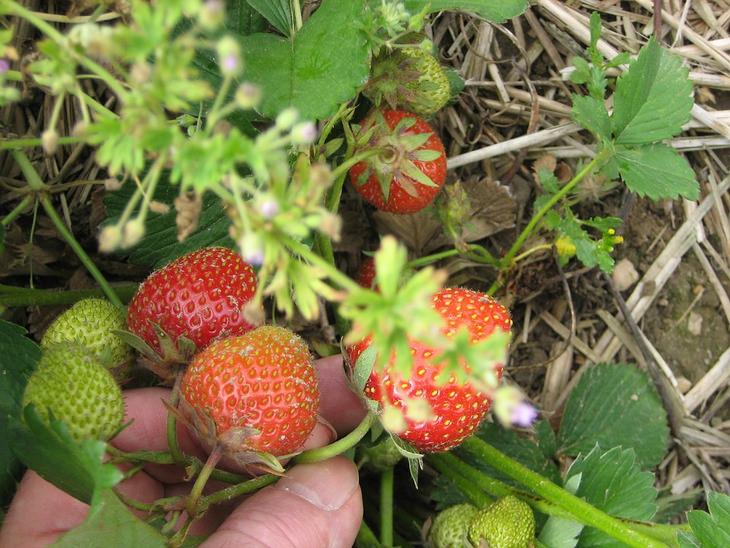
- The best way to grow your own strawberry bush is by buying a potted clipping since strawberry seeds require experience.
- The strawberry bush needs a lot of light and airy ground. The planting seasons that are desired for the plant are spring and summer, compared to the winter season when it comes to planting seeds. Before water, it is necessary to conduct a moisture test of the soil by inserting your pinky to a depth of about 3 cm in the soil of the flowerpot, if the soil is dry on the inside of the flowerpot water it, but if it is damp do not add water so as not to cause the roots to rot.
- Once your bush is planted, it’s just a matter of waiting. When the fruit starts to grow, make sure to keep them off the floor and protect them from birds.
3. Apple tree
The apple is a type of fruit that grows in areas where the climate is cold, but there are several genetically engineered varieties that can grow in other climatic conditions.
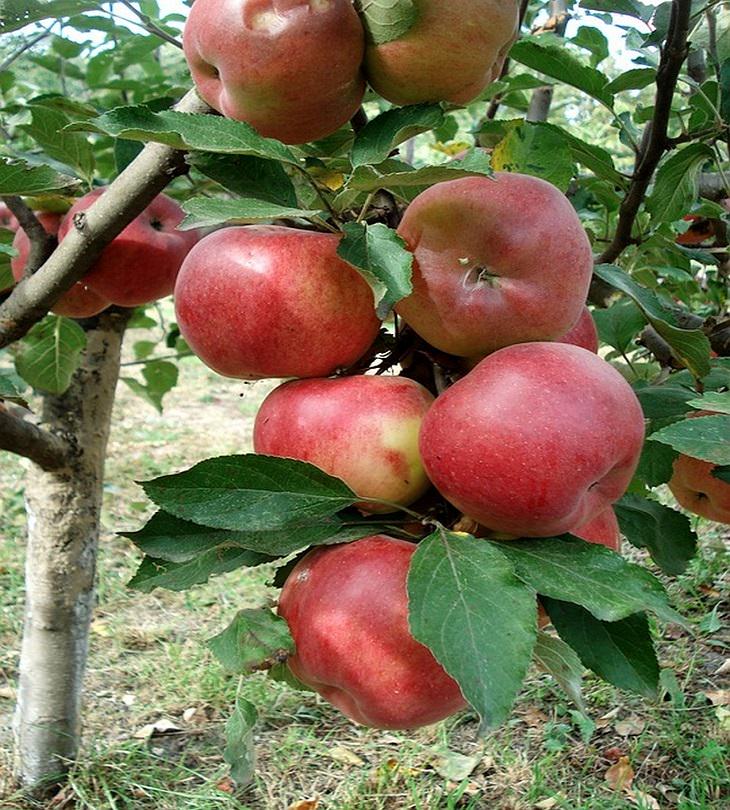
- The apple tree needs lots of sunlight, so it is best to grow it in a flowerpot on the porch or in the garden, where the sun shines most of the day.
- When watering the tree, check the moisture of the soil and ensure that it's not too wet or muddy, since excess water is harmful to the root. Make sure it is dry at least 5cm deep before watering.
- The best time to plant an apple tree is in March, at the end of the winter. It is difficult to sprout apple seeds for planting if you do not have any previous experience, so you should purchase a tree of any size you want, taking into consideration the dimensions of your balcony or garden. The height of a mature tree can reach 2-8 meters, so it is recommended to keep it small.
- The apple tree is "spoiled" and requires dedicated care, including pruning throughout the month of February, in which sick branches are removed, branches growing on top of each other are pruned and whatever leaves remain are stripped. Throughout the rest of the year, cut leaves infected with aphids and pests.
- The apple tree takes 3-4 years to yield fruit.
4. Pomegranate Tree
If your balcony or garden is not used during the winter months, you should grow a pomegranate tree, because it stands naked at this time of year, but immediately afterward it begins to bear green and glorify any garden it’s placed in. In addition, the pomegranate tree is considered very easy to grow and does not require much care.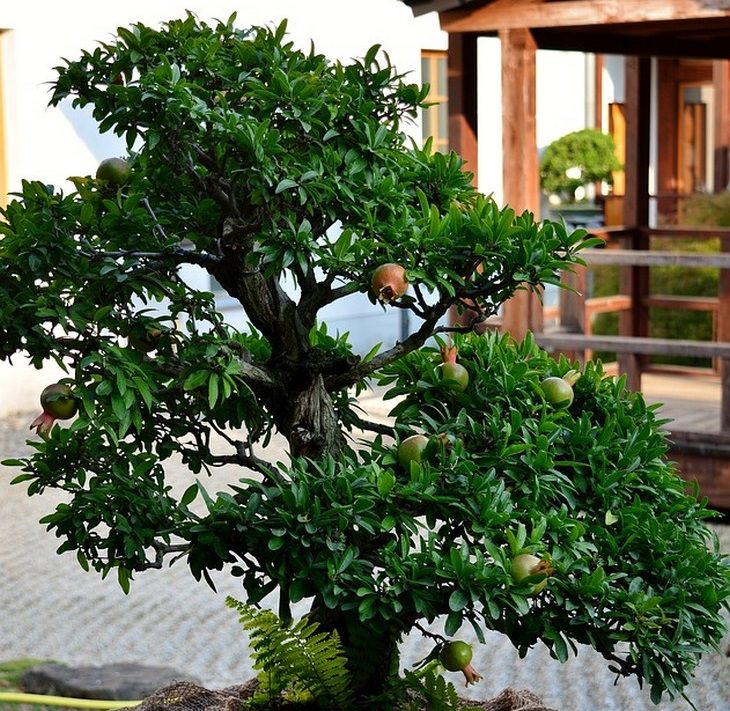
- The recommended variety for growing is Pomegranate Wonderpole, which is best to grow from a seedling stage.
- The pomegranate can be planted all year round.
- The pomegranate needs a lot of sun to produce good fruit. An area with too little sun won’t kill the tree but will make you wait longer for the fruits.
- At first, the tree does not need much water, and at a later stage, it does not need any watering at all because it gets water from dew or moisture in the soil. In addition, it is highly recommended to prune the tree immediately after picking its fruits, with this treatment involving the removal of dead branches.
- It is recommended that you grow the dwarf strain, because it remains small and looks much more beautiful, and also because a regular-sized pomegranate tree can grow to a height of between 2-5 meters.
- Between the time the fruit has grown and when you pick it, it is best to wrap it in a paper bag with a rubber band to protect it from birds and fruit bats.
- In the early years of the tree, it is recommended to dilute its flowering so that it concentrates on its growth, and you should know that it takes between 2-4 years to produce fruit.
5. Fig tree
The aroma of a fig tree at its peak is one of the most wonderful things there is, but it is best to grow this tree in a garden only because it brings with it insects such as wasps and fruit flies that can be uncomfortable on a balcony.
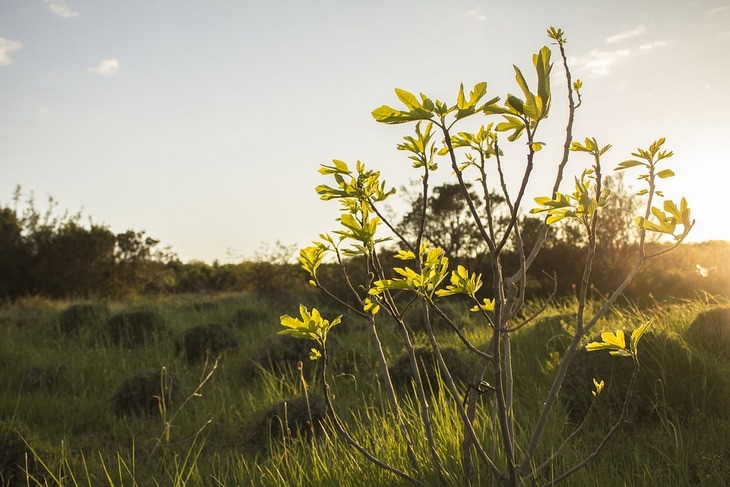
- In order to grow the tree in your garden, you must purchase a small tree or planted clipping.
- The fig needs a lot of sun to grow and blossom. This is especially interesting because the recommended seasons for planting the tree are winter and spring (March - June).
- The fig tree has a fast growth rate and the height of a mature tree ranges between 4-10 meters. Its flowering date takes place between July and August, and after the fruit is used, the tree must be pruned and branches reduced by the end of October.
- The fig tree does not need much water at all since a lot of water causes worms in the fruit. If you decide to grow your fig tree in a pot, you will need to water it a bit more.
6. Cherry Tree
If you thought strawberries were a spoiled and complicated fruit, get to know the expert - the cherry. In order to grow a cherry tree from seeds, you will have to take challenging agronomic actions. The easier ways are to purchase a sapling or simply continue to buy the fruit in the supermarket. If you are adventurous and crave an agricultural challenge, you are more than welcome to try planting and growing one on your own - perhaps you’ll be able to create a new and more durable species. Details for growing these trees from seeds will be found below.
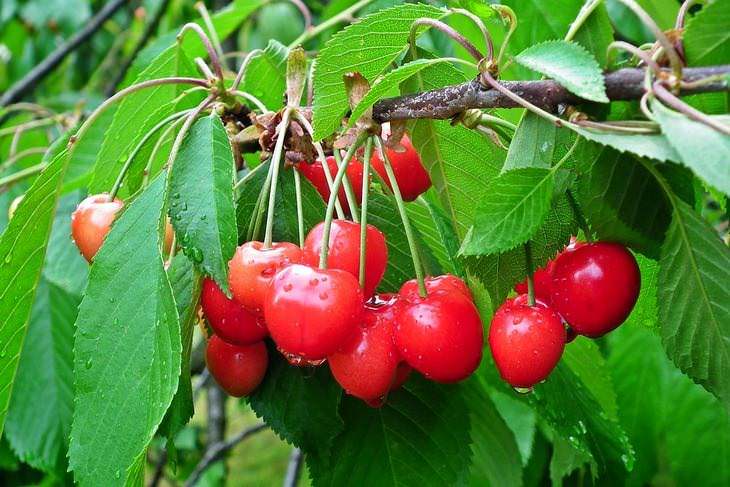
- You can grow the cherry in your garden or even in a flowerpot (not recommended because it will yield little fruit) only if you live in very cold areas. The disadvantage of growing a cherry tree is that the tree is sensitive to heat and is easily attacked by pests.
- Unlike the other trees we’ve gone through so far, the cherry tree loves a lot of water and needs a lot of water, but not flooding! During the fruit season, May to July, the tree must be watered during the day.
- When fully mature, this tree can reach a height of 7-15 meters, so it is recommended to keep it small.
- You can purchase the cherry as saplings or seeds, and the best time to plant the cherry tree is between March and May. The fruit strain is an important detail to consider when purchasing the seedling or seeds, so it is best that you ask for it to be a hybrid species.
- The cherry tree takes 3-6 years to yield fruit, and when picking the fruit, you will have to pick it along with the stem - do not rip just the fruit off! In order for you to produce good fruit from your tree, you will need to prune the tree to a height that will be easy to reach and remove all the leaves from January to February.
Now, as we promised to those who like challenges, sprouting from the seed stage
Before the sprouting process, the cherry seed needs to go through a cold period, in which the seed is placed in moist and cold soil for a period of about 1,000 hours (about 42 days) to simulate the process it undergoes in nature which protects the seeds that remain in a coma, so as not to germinate during the winter. To imitate this natural process, you should soak the seeds in water for 12-24 hours, then transfer the seeds to a perforated plastic cup with 6 small holes made with a hot needle. Apply a bed of peat or vermiculite, which has been soaked for several hours in water, over the seeds and put in a bag or closed box and placed in the refrigerator. The cold process should be carried out between December and January and then you will have to clean, dry and keep the seeds in a cool, dry place until planting - April (spring). Each seed should be grown in a separate pot and placed at a depth of 1-2 cm, placed in a semi-shaded place where the soil should be moist when planting. Water the plant with plenty of water.
7. Nectarine or peach trees
Peaches and nectarines are the kind of tasty seasonal fruit that is highly recommended to grow in the garden or potted on a balcony. Their growth rate is rapid and, in both cases, it is recommended to buy them as a small tree rather than growing it from the seed stage.
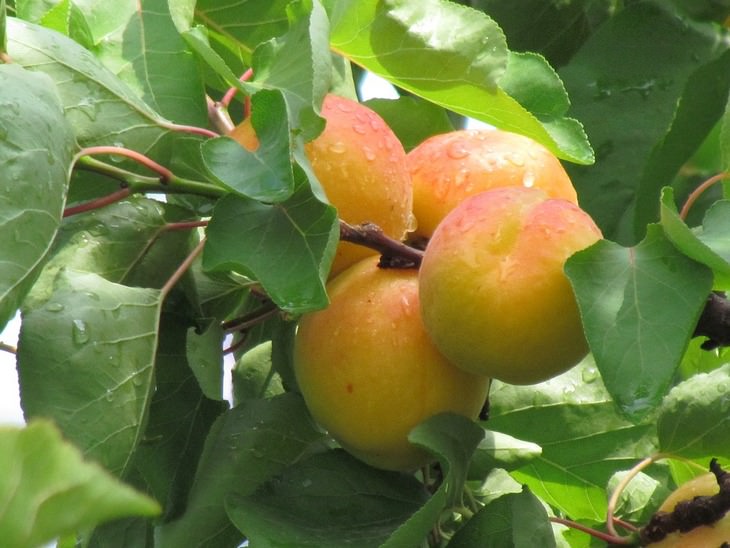
- Plant the tree or place the pot in an area with lots of sun and light when it comes to peaches, while the nectarines should be planted in a place with half full sun time and half shade time. In both these types of trees, you have to take care to water them a lot.
- The peach and nectarine trees reach a height of 4-10 meters, so keep them small.
- You should protect these trees from aphids and other pests because they are considered very sensitive and easily attacked.
- Both types of trees yield fruits from the age of 2-3 years, when the fruit of the Nectarine tree appears between May and August, while peaches start bearing fruit between June and September. When fruit grows on the tree, it is advisable to cover the tree with a net and place traps against fruit flies and the like so as to protect the fruit from pests. In the winter months of January and February, after the tree has shed, it must be pruned and the remaining leaves left to allow it to "rest" until flowering begins again, around March-April.
8. Guava tree
The guava is a fruit that you either love or hate, mainly because of its strong and pungent smell. But all fruit lovers who want to grow a guava tree on their balcony or in their garden have a great advantage because it is a plant that is very easy to grow.

- Guava can be obtained as saplings or seeds, and the recommended planting time is in the spring. The guava tree needs full sunlight and a large to moderate amount of water.
- Guava takes between 2 to 4 years to give fruit and it blooms during the spring months - May to June. Fruit grows on this tree from the summer months to autumn. During this time, the fruit growing on the tree should be wrapped in netting for protection.
- After harvesting the fruit, it is recommended to prune the tree and remove damaged branches by December - don’t overdo it, otherwise it will not yield fruit.
- Planting is carried out from spring to summer, and each seed should be planted in a separate pot 1cm deep and the soil must be moist and warm. Make sure to water it plenty.
- The height of the tree ranges from 1½ to 8m.
As you can see, if you purchase a cutting, sapling or a smaller tree, gardening isn’t so hard, and working in your garden will only give you a tremendous sense of satisfaction when you can produce fruit without chemicals and at almost no cost.









